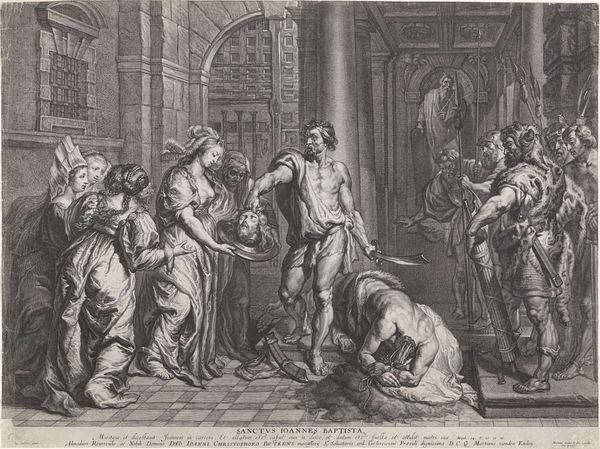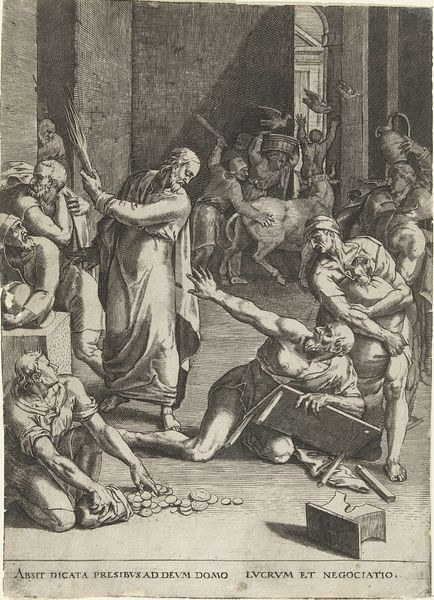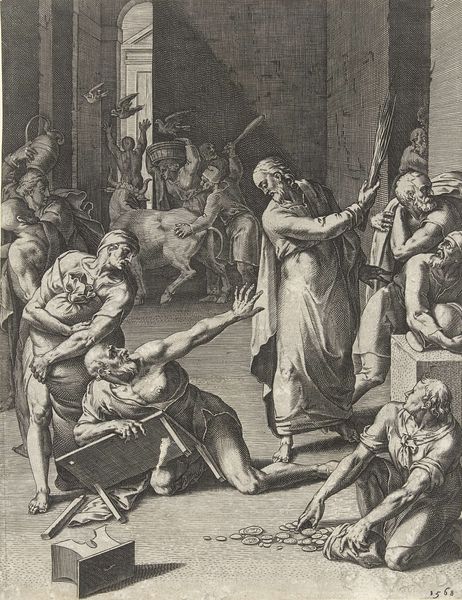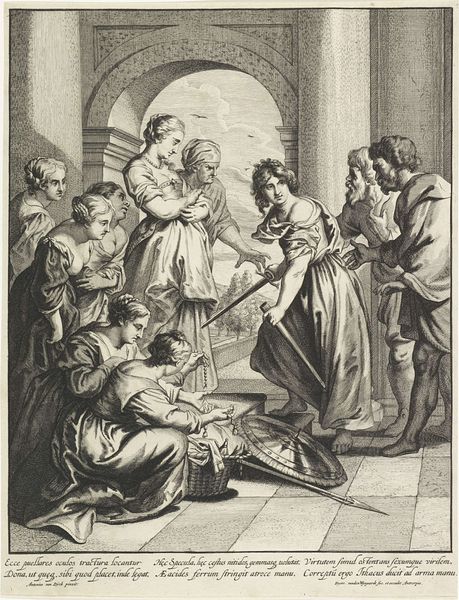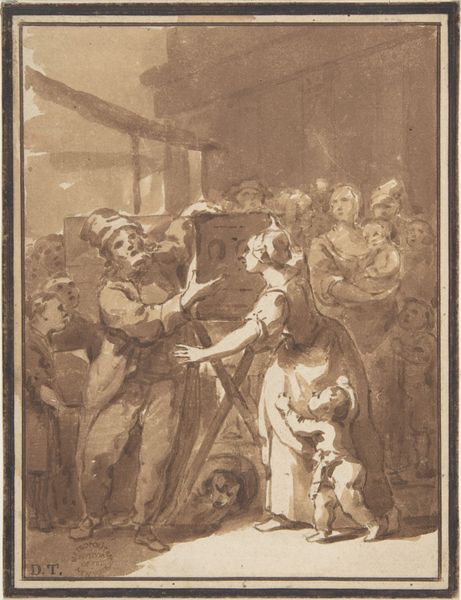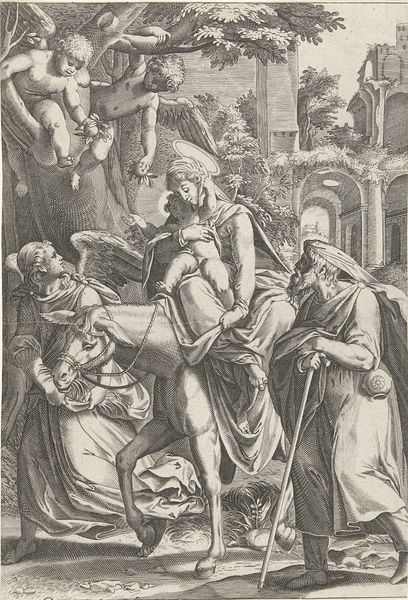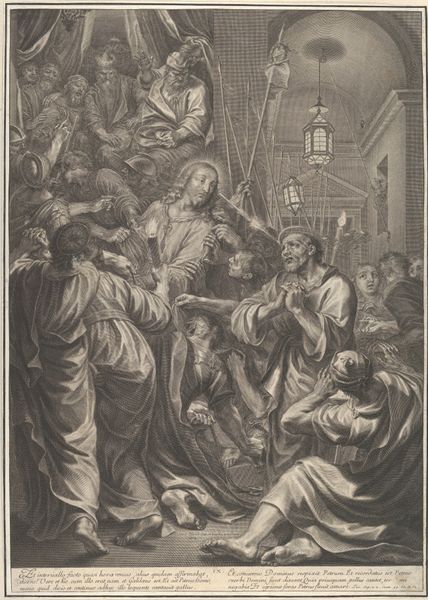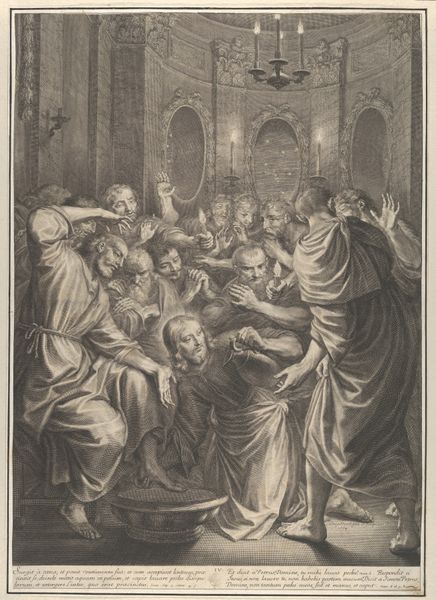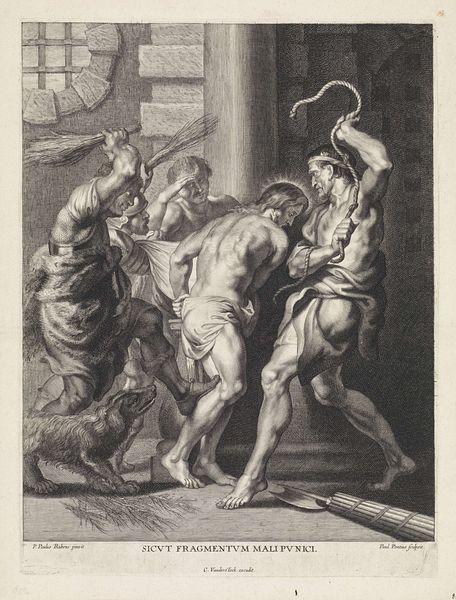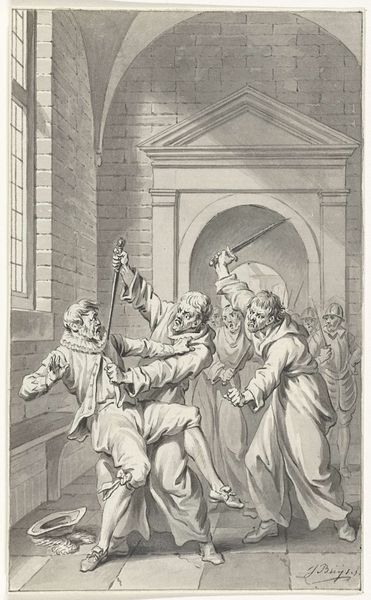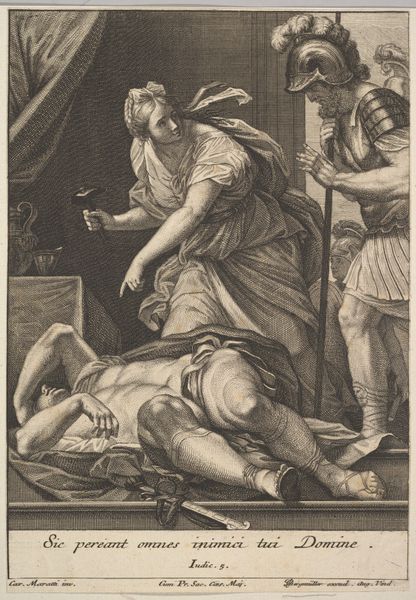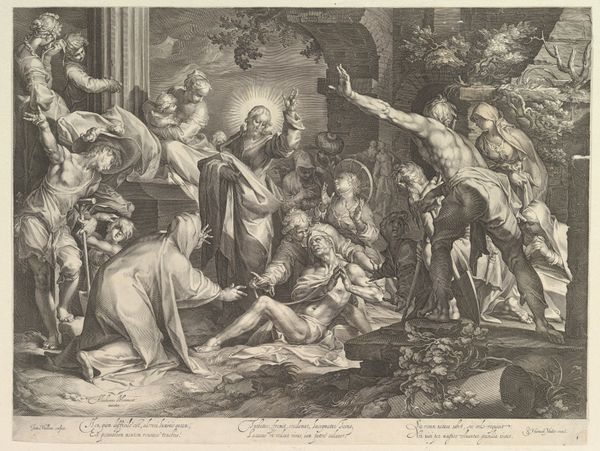
painting, oil-paint
#
narrative-art
#
baroque
#
painting
#
oil-paint
#
figuration
#
oil painting
#
christianity
#
history-painting
#
italian-renaissance
#
realism
Dimensions: 380 x 275 cm
Copyright: Public domain
Curator: Good morning. Today we're standing before Caravaggio's "Resurrection of Lazarus," a stunning oil painting from 1609. What's grabbing you first about this, right here and now? Editor: It's just so...dark! Like being in a cave. You can almost smell the earth, the dampness. It feels claustrophobic, even with the figures present. A stark contrast of light and shadow - that's quite a striking opening for a resurrection. Curator: Right? Caravaggio never shied away from the gritty details. What strikes me is the theatrical drama. See how the light seems to stage the event, spotlighting Lazarus as he's jolted back to life. One figure points towards Lazarus - it's as if we the viewer are invited to be present as an awakening unfolds, right here in this tomb of human drama. Editor: That raised arm is so potent! It’s both commanding and pleading, perhaps a gesture asking the heavens. Hands have always symbolized power, creation, and transmission; this artistic decision adds to the painting's emotional charge, imbuing a strong emotional resonance to its symbolic implications. Curator: It's pure Baroque, all right? Full of dynamic emotion and gesture. Lazarus, pale and limp, acts as the perfect contrast to the others’ frenzied movement. It seems less about literal resurrection and more about that fragile threshold between life and death. Editor: Definitely. And I'm particularly drawn to the skull at the lower right, near the hands that clutch for meaning. In Christian iconography, the skull signifies mortality, and this painting uses it brilliantly. Its very placement next to hands reaching out into the void conveys our perpetual human drama between material existence and death, isn't it so telling about ourselves and how we engage with reality? Curator: Spot on. Caravaggio masterfully uses these kinds of common allegories to underscore larger themes about spiritual awakening, redemption, all of it. His life wasn’t exactly angelic - he was famously tempestuous, but here, maybe he grapples with the chance for rebirth through faith? Editor: Perhaps so. Beyond faith, these figures remind me about ourselves—frail humans— and their urgent struggle against life's inevitable conclusion. Regardless, it seems "The Resurrection of Lazarus" asks us if we are ready to meet resurrection. Curator: Wonderfully put. For me, it encapsulates the idea of radical transformation. Even now, centuries later.
Comments
No comments
Be the first to comment and join the conversation on the ultimate creative platform.
